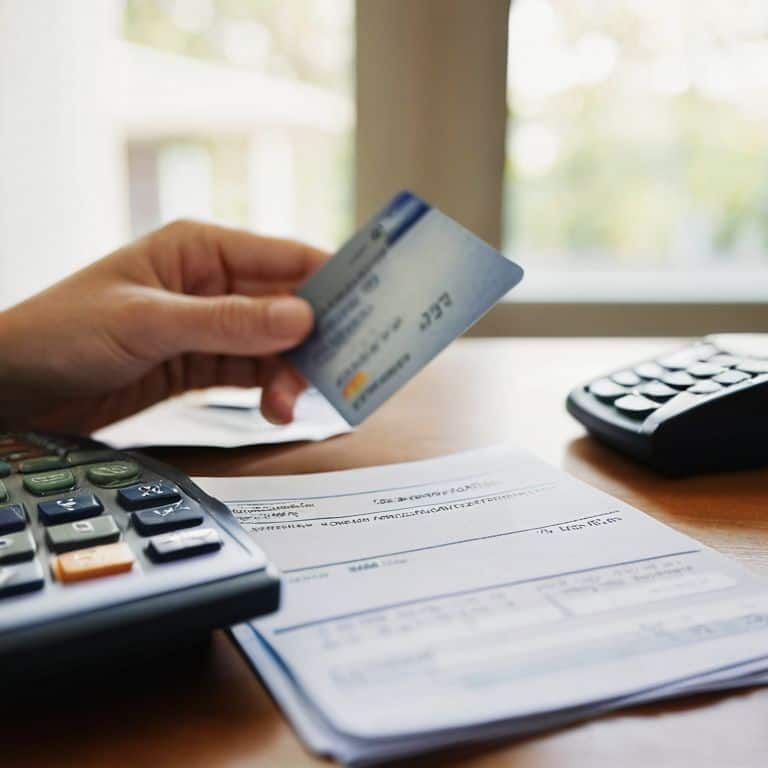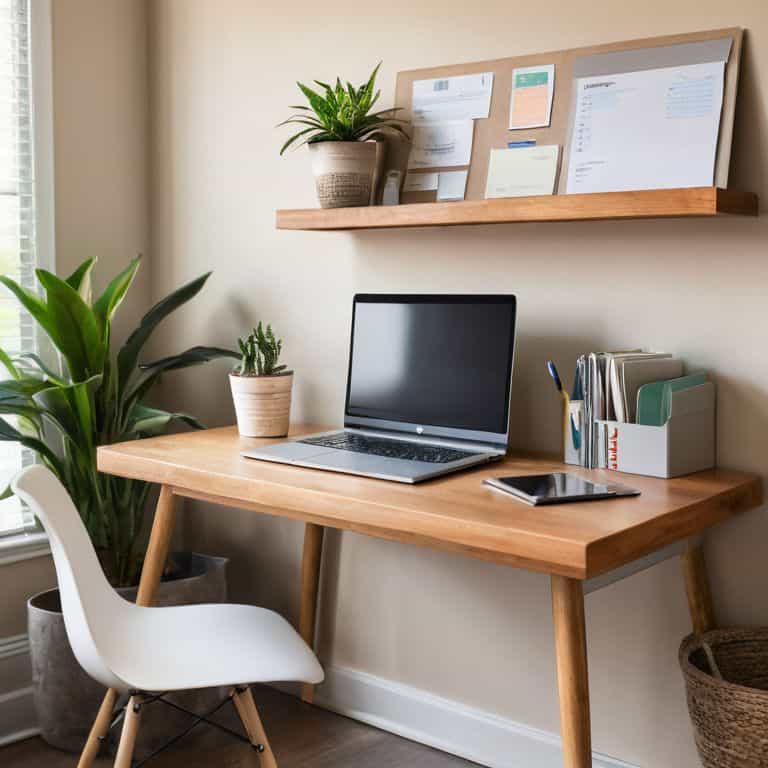I still remember the feeling of being drowning in debt, with no clear plan on how to pay off credit card debt fast. It was like being stuck in a never-ending cycle of minimum payments and soaring interest rates. But here’s the thing: the conventional wisdom that you need to make drastic changes to your lifestyle to get out of debt just isn’t true. In fact, I’ve found that it’s often the small, consistent habits that make the biggest difference.
In this article, I’ll share my personal story of paying off $30k in debt and the practical strategies that worked for me. You’ll learn how to create a simple, yet effective plan to tackle your credit card debt, without needing to become a financial expert. I’ll cut through the noise and give you honest, actionable advice on how to pay off credit card debt fast, so you can start building a stronger financial future. Whether you’re struggling to make ends meet or just want to break free from the debt cycle, this guide is for you.
Table of Contents
- Guide Overview: What You'll Need
- Step-by-Step Instructions
- How to Pay Off Credit Card Debt Fast
- 5 Proven Strategies to Kick Credit Card Debt to the Curb
- Key Takeaways to Achieve Financial Freedom
- Paying Off Credit Card Debt: A Journey to Financial Freedom
- Breaking Free from Credit Card Debt
- Frequently Asked Questions
Guide Overview: What You'll Need

Total Time: several months to 2 years
Estimated Cost: $0 – $100
Difficulty Level: Intermediate
Tools Required
- Spreadsheets (for tracking expenses)
- Calculator (for calculating payments)
Supplies & Materials
- Budgeting Books (optional)
- Debt Repayment Planner (optional)
Step-by-Step Instructions
- 1. First, let’s get real about our debt situation by tracking every single transaction for a month to understand where our money is going. This step is crucial because it helps us identify areas where we can cut back on unnecessary expenses and allocate that money towards our debt. I remember when I first started doing this, I was surprised to find out how much I was spending on coffee and dining out. By cutting back on these expenses, I was able to free up a significant amount of money each month to put towards my debt.
- 2. Next, we need to _face the music_ and make a list of all our credit cards, including the balance, interest rate, and minimum payment for each. This will give us a clear picture of our debt and help us prioritize which cards to pay off first. When I was paying off my debt, I focused on paying off the card with the highest interest rate first, while still making the minimum payments on my other cards. This approach is known as the debt avalanche method.
- 3. Now, it’s time to create a _realistic budget_ that accounts for all our necessary expenses, such as rent/mortgage, utilities, and groceries. We should also make sure to include a category for debt repayment and try to allocate as much money as possible towards it. I use the 50/30/20 rule as a guideline, where 50% of my income goes towards necessary expenses, 30% towards discretionary spending, and 20% towards saving and debt repayment.
- 4. The next step is to _negotiate with our creditors_ to see if they can offer any assistance, such as a lower interest rate or temporary reduction in payments. When I was struggling to make my payments, I called my credit card company and explained my situation, and they were able to lower my interest rate and waive some of the late fees. It never hurts to ask, and it’s always worth a try to reduce our debt burden.
- 5. We should also consider _consolidating our debt_ into a single loan with a lower interest rate and a single monthly payment. This can simplify our finances and make it easier to manage our debt. However, we need to be careful and make sure that we’re not just trading one debt for another. We should always read the fine print and understand the terms of the new loan before signing up.
- 6. Another strategy that worked for me was to use the snowball method, where we pay off our credit cards with the smallest balances first, while still making the minimum payments on our other cards. This approach can provide a psychological boost as we quickly pay off smaller debts and see the progress we’re making. However, it’s worth noting that this method may not always be the most efficient way to pay off our debt, as it may not always target the cards with the highest interest rates first.
- 7. Finally, we need to _automate our debt payments_ to make sure we never miss a payment. We can set up automatic transfers from our checking account to our credit card accounts, and even consider setting up bi-weekly payments instead of monthly payments to pay off our debt faster. By automating our payments, we can ensure that we’re always making progress on our debt, even when we’re not thinking about it.
How to Pay Off Credit Card Debt Fast

As I delved deeper into my debt repayment journey, I discovered the credit card debt snowball method to be a game-changer. This approach involves paying off credit cards with the smallest balances first, while making minimum payments on the rest. It’s a psychological boost to see those smaller debts disappear quickly. Alongside this method, I also explored debt consolidation loans for bad credit, which can be a viable option for those struggling with multiple high-interest debts.
To accelerate my debt repayment, I utilized credit card balance transfer tips to move my high-interest debt to a lower-interest credit card. This strategy requires discipline, as it’s essential to pay off the debt before the introductory period ends. I also considered high interest credit card debt solutions, such as negotiating with my credit card company or seeking assistance from credit counseling services for debt.
By combining these strategies, I was able to find the fastest way to pay off credit card debt that worked for me. It’s essential to remember that everyone’s financial situation is unique, and what works for one person may not work for another. Therefore, it’s crucial to explore different options and find the approach that best suits your needs.
Credit Card Debt Snowball Method Success
I’ve seen the credit card debt snowball method work wonders for people, including myself. This approach involves paying off credit cards with the smallest balances first, while making minimum payments on the rest. It’s amazing how quickly you can gain momentum and start feeling like you’re making progress. By focusing on one card at a time, you’ll be able to see the finish line and stay motivated to keep pushing forward.
I remember when I paid off my first credit card – it was a huge weight off my shoulders. The sense of accomplishment was addicting, and it propelled me to keep going. If you’re struggling to get started, try the debt snowball method and see how it can work for you. It’s not always the most mathematically efficient approach, but the psychological boost you’ll get from those early wins is invaluable.
Debt Consolidation Loans for Bad Credit Options
When I was struggling with debt, I considered debt consolidation loans, even with my less-than-perfect credit. It’s an option to explore, but beware of high interest rates. I found a few lenders that cater to bad credit, such as LendingPoint or FreedomPlus, but make sure to read the fine print.
These loans can simplify your payments, but they might not always save you money. I learned to calculate the total cost, including fees, before making a decision. It’s not a one-size-fits-all solution, but for some, it’s a viable path to consolidating debt and starting fresh.
5 Proven Strategies to Kick Credit Card Debt to the Curb
- Face Your Debt: The first step to paying off credit card debt is to track it – I mean, really track it. Write down every single debt, the balance, the interest rate, and the minimum payment. This is your wake-up call, and trust me, it’s a necessary one.
- Snowball Your Debts: I’m a fan of the debt snowball method, where you pay off your smallest balance first while making minimum payments on the rest. It’s not always the most efficient, but the psychological win of clearing a debt quickly is priceless.
- Cut Expenses, Not Happiness: Don’t believe the myth that paying off debt means living off ramen noodles and regret. Identify areas where you can cut back without cutting into your happiness. For me, it was finding cheaper alternatives for my daily coffee and canceling subscription services I didn’t use.
- Automate Your Payments: The key to consistency is automation. Set up automatic payments for your debts, and make sure you’re paying more than the minimum. I also automate my savings, so I ensure I’m building a cushion while I’m paying off debt.
- Negotiate Your Interest Rates: This one’s a game-changer. Call your credit card company and ask them to lower your interest rate. The worst they can say is no, but often, they’ll work with you, especially if you’ve been a good customer. This simple call can save you hundreds, if not thousands, in interest payments over time.
Key Takeaways to Achieve Financial Freedom
By committing to a weekly ‘money date’ and tracking your expenses, you can gain control over your finances and make informed decisions to pay off credit card debt efficiently
Implementing the credit card debt snowball method or exploring debt consolidation loans can be effective strategies for becoming debt-free, depending on your individual financial situation and credit score
Automating your payments, finding cheaper alternatives for subscriptions, and building simple, sustainable habits are crucial steps in maintaining momentum and achieving long-term financial stability
Paying Off Credit Card Debt: A Journey to Financial Freedom
The key to paying off credit card debt fast isn’t about finding a magic formula, it’s about committing to a consistent, relentless pursuit of financial freedom – one payment at a time.
Alex Barnes
Breaking Free from Credit Card Debt

Paying off credit card debt fast requires a combination of strategies, including the debt snowball method, debt consolidation loans, and a solid understanding of your financial situation. By following the step-by-step guide outlined in this article, you can create a personalized plan to tackle your debt and start building a stronger financial future. Remember, becoming debt-free is not just about paying off your credit cards, but also about developing healthy financial habits that will serve you well in the long run. It’s essential to stay committed, track your progress, and make adjustments as needed to ensure you’re on the right path.
As you embark on this journey to financial freedom, keep in mind that it’s a marathon, not a sprint. There will be ups and downs, but with persistence and the right mindset, you can overcome any obstacle. Believe in yourself and your ability to take control of your finances. Celebrate your small wins, and don’t be too hard on yourself when you encounter setbacks. You’ve got this, and with time, patience, and dedication, you’ll be able to look back on your debt-ridden days with a sense of pride and accomplishment, knowing you’ve successfully turned your financial life around.
Frequently Asked Questions
What are the most effective ways to negotiate with credit card companies to lower my interest rates?
I’ve been in your shoes, and negotiating with credit card companies can be a game-changer. Be honest about your financial struggles, and politely ask to speak with a supervisor. Explain your loyalty and on-time payments, then request a lower interest rate. I’ve had success with this approach, and it’s worth a shot – it could save you hundreds in interest over time.
Can I use a balance transfer credit card to pay off debt if I have a low credit score?
Honestly, balance transfer cards can be tough to get with low credit scores. I’ve been there, and it’s frustrating. Typically, you’ll need a score above 650 for approval. However, some issuers offer balance transfer cards with lower score requirements, often with higher fees. It’s essential to weigh the pros and cons and consider alternative debt repayment strategies if you’re not approved.
How long will it take to improve my credit score after paying off all my credit card debt?
Paying off all your credit card debt is a huge milestone, and it can definitely boost your credit score. In my experience, you can start seeing improvements within 1-3 months, but significant changes can take around 6-12 months. Keep in mind, it also depends on your overall credit history and other factors, but trust me, it’s worth the wait!














